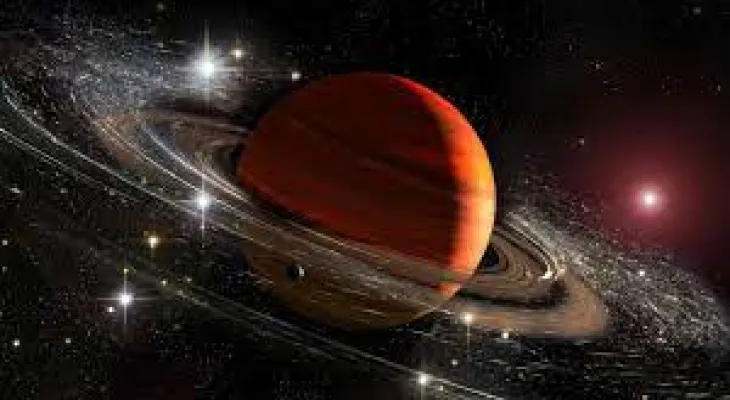Search here
Newspaper
Search here

Arab Canada News
News

Published: February 19, 2024
When it comes to whether life exists in the metaphorical backyard of Earth, Titan, Saturn's largest moon, often arouses researchers' curiosity. But a new study conducted at Western University in London highlights why we continue to search when it comes to life elsewhere in our solar system.
A recent study, led by Western astrobiologist and member of the Western Institute for Earth and Space Exploration, Katherine Neish, showed that beneath the surface of Titan - Saturn's largest moon - is most likely an uninhabitable environment incapable of supporting life.
But when it comes to studying life beyond Earth, the icy moons of the giant planets receive special attention due to the belief that the moons contain large oceans of liquid water beneath the surface.
On Titan, for example, it is believed that beneath its icy shell lies an ocean more than 12 times the size of Earth's oceans.
Neish said, "Life as we know it here on Earth needs water as a solvent, so planets and moons that contain a lot of water are important when searching for life beyond Earth."
Is there anyone out there?
Neish and her colleagues published in the Astrobiology journal the data collected from impact craters to determine the amount of organic molecules that can be transported from Titan's organics-rich surface to its subsurface ocean.
Throughout Titan's history, comets striking the icy moon have melted its surface, forming pools of liquid water that mix with surface organics. As a result, the melted material is denser than its icy shell, so the heavier water sinks through the ice, possibly all the way to Titan's subsurface ocean.
According to the study, Neish and her colleagues determined the number of comets of various sizes that would hit Titan each year over its history using assumed impact rates on Titan's surface. This allowed researchers to predict the flux rate of water carrying organic material transitioning from Titan's surface to its interior.
Neish and her team found that the weight of organic material transported in this way does not exceed 7,500 kg annually of glycine, the simplest amino acid that makes up proteins in life. This is approximately the same mass as an African elephant male.
The study says this is significant, given the fact that all biomolecules, including glycine, use carbon as the backbone of their molecular structure.
Neish, who is also a professor of Earth sciences, said: "One elephant per year of glycine in an ocean 12 times the size of Earth's oceans is not enough to sustain life." "In the past, people often assumed that water equals life, but they neglected the fact that life needs other elements, especially carbon."
As for other icy worlds, such as Jupiter's moons Europa and Ganymede and Saturn's moon Enceladus, they contain very little carbon on their surfaces, and it remains unclear how much can be obtained from within them. And since Titan is the most organic-rich icy moon in the solar system, if its subsurface ocean is uninhabitable, it does not bode well for habitability in other known icy worlds, according to the study.
Neish said: "This work shows that it is very difficult to transport the carbon present on Titan's surface to its subsurface ocean, and it is very hard for water and the carbon necessary for life to exist in the same place."
However, the recent study not only highlights Titan's potential lack of habitability but also those of the solar system's four outer gas planets: Jupiter, Saturn, Uranus, and Neptune.
Neish said: "Unfortunately, we will now need to be less optimistic when searching for life forms beyond Earth within our solar system." "The scientific community has been very excited to find life in the icy worlds of the outer solar system, and this result suggests that it may be less likely than we previously assumed."
Comments